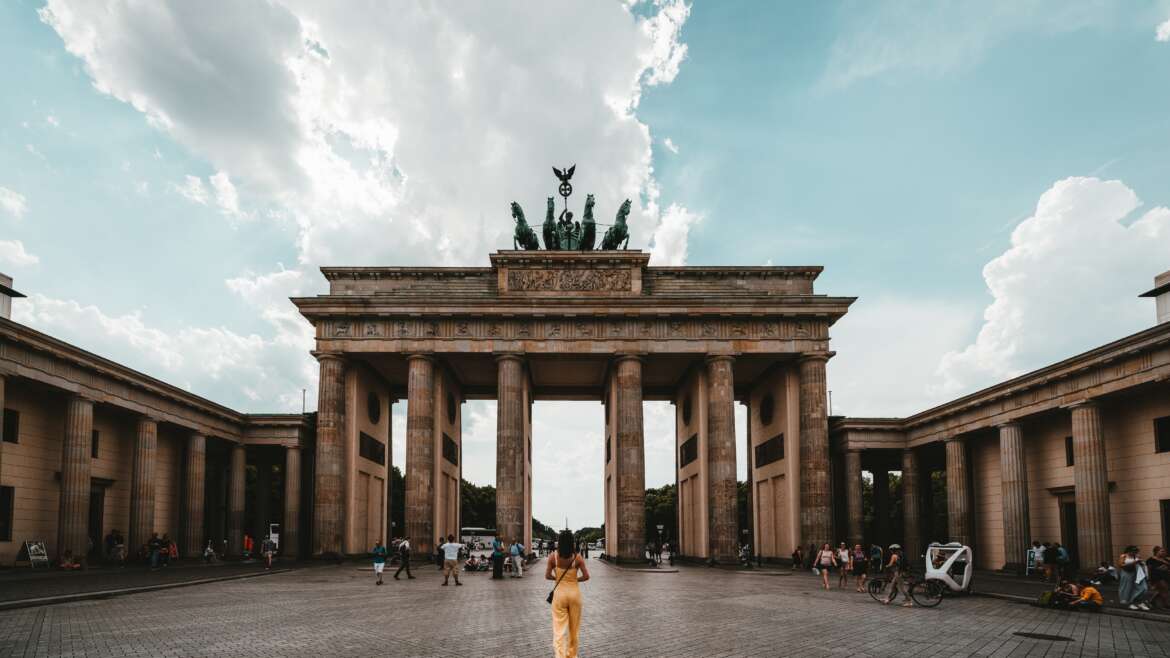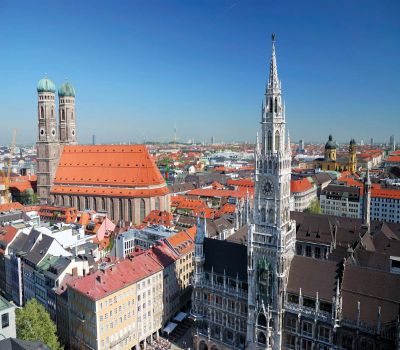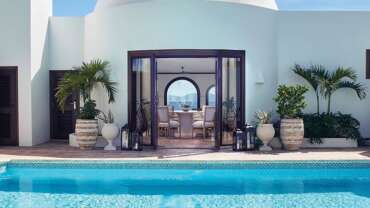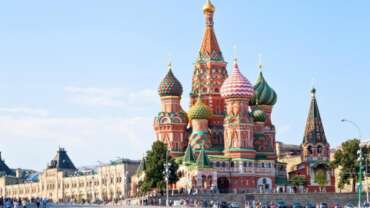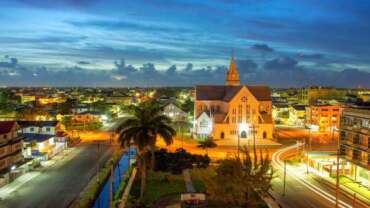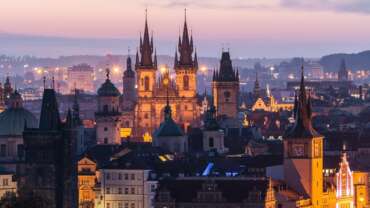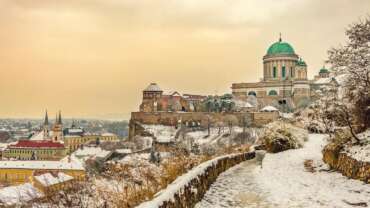Germany - Simply Inspiring
Germany is a Western European country with a landscape of forests, rivers, mountain ranges and North Sea beaches. It has over 2 millennia of history. Berlin, its capital, is home to art and nightlife scenes, the Brandenburg Gate and many sites relating to WWII. Munich is known for its Oktoberfest and beer halls, including the 16th-century Hofbräuhaus. Frankfurt, with its skyscrapers, houses the European Central Bank.
History, culture, and natural beauty perhaps best describe the essence of vacationing in Germany. With its many historic cities and small towns, along with an abundance of forests and mountains, visitors are spoiled for choice when it comes to choosing a unique place to visit. Those wanting to sightsee or experience the arts should head to the metropolitan areas such as Munich, Frankfurt, or Hamburg, while those looking for recreational activities should visit places such as the Bavarian Alps, the Black Forest, or the Rhine Valley.
Lovely old cathedrals and grand palaces are everywhere, and in the smaller towns and villages – some with their original medieval Old Towns still intact – many centuries-old traditions, including traditional Christmas markets, festivals, and fairs, continue to this day. At the cultural heart of Germany is the capital, Berlin, home to many fine museums and galleries, while nature lovers will find a world of possibilities in Germany’s great outdoors.
Historic Highlights of Germany
The “Historic Highlights of Germany” are 17 cities combining historical heritage with modern urban lifestyles, each making its own specific contribution to culture, business and science.
Aachen: City of Europe with a landmark cathedral
Aachen lives and breathes Europe. You could say it’s Europe in miniature: situated squarely in the centre of a tri-border region, it has encapsulated the continent’s roots, values and ideals in a variety of ways since the days of Charlemagne.
Aachen Cathedral is both a local landmark and a monument to Europe’s illustrious past. Built in around 800 AD, it was the first cathedral in northern Europe. Across a period spanning centuries, it served as the church of coronation for nearly every German king. Its treasury houses one of the most significant collections of church treasures north of the Alps. So it’s no wonder both the cathedral and its treasury are among the highlights on the sightseeing route that winds through Aachen and takes in a series of spectacular buildings. Each stop along the way focuses on a different topic: history, science, Europe, religion, power, business and media. The lack of an equestrian-themed stop is somewhat of an oversight, though, as the annual Concours Hippique International Officiel (CHIO) in Aachen is one of the world’s leading equestrian tournaments.
Visitors to the city are blown away by its relaxed atmosphere, best experienced on a stroll through the historical streets. There’s a charming contrast between the grand old buildings and the open-minded attitude and exuberant buzz created by 45,000 students hailing from all corners of the globe. Also not to be missed are the modern works on display at the Ludwig Forum for International Art. See the European idea flourish whatever you do and wherever you go in Aachen.
Augsburg: a prosperous present and an illustrious past
Augsburg, with its Mozart heritage, is one of Germany’s most historically significant cities. As you stroll through its ancient streets, it doesn’t take much imagination to gain a sense of this beautiful city’s importance in the days when the Fugger mercantile and banking dynasty was at its peak.
Augsburg has always been a little more glamorous than other cities. Its magnificent fountains, grand old guild houses, exquisite churches and the Town Hall combine to form a cityscape of rare intensity. More recent periods have also left their mark here, most notably the Baroque and Rococo eras and the Art Nouveau movement, all of which transform a stroll through the city into a very special experience. As far back as the High Middle Ages, travellers were astounded by the cathedral with its stunning bronze doors (now nearly 1,000 years old) and the Basilica of St. Ulrich and St. Afra. Another marvel was the wealth of the Fugger family, who rose to become a global powerhouse of capitalism in the space of just three generations.
The Mozarts join the Fuggers as another family with close ties to the city. Leopold Mozart, father to Wolfgang Amadeus and an influential composer in his own right, was born here. The Mozart Festival, which is held every May, is just one way the father-and-son composers are commemorated in the city. Did you know that Augsburg was once surrounded by a continuous city wall? Numerous gold and silversmiths settled within it. Their works can be viewed in museums and purchased from independent businesses. After exploring and shopping, what better way to draw the day to a close than with a drink in one of the many lovely bars in the Old Town.
Bonn: a new lease of life for Germany’s former capital
Capital of the Federal Republic of Germany until 1990 and now an internationally renowned hub of commerce and culture, the idyllic city of Bonn on the Rhine River is as assured and cosmopolitan as ever.
To this day, Bonn and the ‘Bonn Republic’ are symbolic of diplomacy, democracy and Germany’s rise following World War II. Authentic sites of Germany’s political past now open to visitors include Palais Schaumburg, the Chancellor’s Bungalow and the former parliament chamber. The city also has many exhibits that rekindle memories and illustrate the historical and political background to events between the post-war period and reunification.
But Bonn is much more than just the former capital of Germany, as it enjoys a widespread reputation as a city of the arts. As the birthplace of Beethoven, Bonn spreads the joy of classical music and honours its world-famous son during the Beethoven Festival with a series of concerts held every September and October. The city lives up to its reputation as one of Germany’s finest centres for art with two of Germany’s most significant art museums – the Bonn Museum of Modern Art and the Art and Exhibition Hall of the Federal Republic of Germany (better known as the Bundeskunsthalle). The Museum of Modern Art features one of the most extensive collections of German Expressionism, while visitors who stroll across the Marktplatz square, which dates back to the 11th century, can marvel at the Baroque Town Hall as they sample the delicious produce that local farmers sell here daily.
Erfurt: where beauty meets confidence
Erfurt wows visitors with its Medieval charm and rich history combined with a lust for life and a warm welcome. Situated at the crossroads of ancient trade routes, the capital of Thuringia has always been a meeting place and home of important intellectuals and a magnet for visitors from around the world.
Erfurt was once lauded as the City of Towers in reference to the lofty spires of the city’s 25 parish churches, 15 abbeys and monasteries and ten chapels that stretch their way up to the heavens. Particularly striking are St. Mary’s Cathedral and the Church of St. Severus, as together these two masterful examples of German Gothic design form an architectural ensemble like no other in Europe. Nowadays, the church towers cast their shadows over the lovingly restored timbered-framed houses and beautiful Renaissance buildings of the historical city centre, where one of Germany’s finest open-air theatre events, the Cathedral Steps Festival, takes place every year.
St. Augustine’s Monastery, where Martin Luther spent five years of his life, the Predigerkirche church and the fortifications of Petersberg Citadel are superb examples of Medieval and modern-era architecture. But far from being just a city of sacred buildings, Erfurt is also a city of bridges, the most famous of which is the Merchants’ Bridge, which has the longest row of inhabited buildings on any bridge in Europe. Buildings that are now home to art galleries, wine bars and antique dealers. And boy does Erfurt know how to party! The Middle Ages are revived every summer during the Merchants’ Bridge Festival in the Old Town, a celebration involving ancient crafts, courtly love songs, jesters and a colourful array of stalls. If that’s not enough for you, the superb markets held all-year round transform the Domplatz square into a feast for the senses.
Freiburg: a city with a sunny disposition
Are the people of Freiburg so cheerful because their city gets more sun than anywhere else in Germany? It’s hard to say. But what is certain is that life is good in Germany’s southernmost major city.
And yet Freiburg has more to offer than good spirit alone. It boasts one of Germany’s prettiest Old Towns, with its characteristic bächle – the narrow channels of water that run alongside the pavements. Not to mention a wealth of culture and history, many cafés and cosy bars, delicious local cuisine and scenic surroundings, with an atmosphere that is more laid-back than most – but that’s southern Germany for you.
Experience this vibe for yourself with a stroll through the Old Town, which is overlooked by the 116-metre-tall spire of the striking Freiburg Minster, one of Germany’s most beautiful religious buildings.
The Münsterplatz square is the largest in the city centre. It hosts weekly markets almost every day. Its main sights include the Historical Merchants’ Hall built in 1532 with its deep-red facade and colourful turrets as well as the ‘Haus Zum Schönen Eck’ built in 1761, which is now the Museum of Municipal History.
Freiburg’s multitude of glorious squares also provides an ideal backdrop for the dozens of celebrations and festivals held every year in the Old Town. And when you’re feeling all partied out, now is the perfect time to unwind in the many parks and green spaces, at one of the nearby lakes or on the 1,284 metre Schauinsland mountain just outside of Freiburg. It’s no wonder that Freiburg has been named a Green City, as it is seen as a global pioneer in eco-friendliness.
Koblenz: the German Corner and the nation’s best heirloom
At the famous Deutsches Eck, or German Corner, where the Rhine and Moselle converge, lies one of Germany’s oldest and most beautiful cities: Koblenz. Vineyards, forests and four mountain ranges form the unique backdrop to this 2,000-year-old city.
French joie de vivre and German tradition have produced a truly unique cultural fusion in Koblenz, characterised by cosy wine taverns, narrow alleyways, romantic spots and a genuinely welcoming atmosphere. The Four Towers, as the oriels of four Baroque houses on each corner of the main street crossing are known, are the perfect place to begin a stroll through the Old Town. Other top attractions include the Guard House, which dates back to 1689, and the Schängel fountain, which stands in the courtyard of the Town Hall and is one of the city’s main landmarks. A ferry that passes the Electoral Palace will take you to Stolzenfels Castle, one of the most impressive examples of early Prussian art and cultural history.
The people of Koblenz also have a clear appreciation of contemporary art, as evidenced by the Ludwig Museum near the Deutsches Eck, the confluence of the Rhine and Moselle and a historical spot where a striking statue of Emperor William I was placed in 1891. Towering on the opposite side of the Rhine is Ehrenbreitstein, Europe’s second-largest preserved fortress. At nearly 120 metres above the river, this is the perhaps the best place to enjoy views of the city and the Upper Middle Rhine Valley. UNESCO has also recognised the area’s outstanding beauty, awarding it World Heritage Site status without hesitation. Come and see it with your own eyes.
Heidelberg: Germany’s romantic side
Heidelberg is a city worth falling in love with: the dreamy, romantic setting around the Old Bridge and the castle, an unparalleled choice of culture and entertainment wherever you go and hearty yet heavenly cuisine. All of which is nestled between the Neckar River and the foothills of the Odenwald forest.
It’s easy to see why visitors flock straight for the castle, sat upon its throne on the hill some 70 metres above the Neckar River, when they come to Heidelberg. Together with the Old Bridge, it is among the most impressive sights to be found in Germany. It is worth joining a guided tour of the town, if only to appreciate the history of this mighty fortress, which has seen a thing or two over the past 700 years. Did you know that the largest barrel in the world is stored in the castle’s wine cellar? Made from 130 oak trees, it has a capacity of precisely 221,726 litres. Heidelberg Castle Festival is also one of the summer’s main events at the castle.
In the centre of the Old Town is the Marktplatz square, which boasts one of Heidelberg’s many beautiful fountains, grand period houses, cafés and even more pretty little shops. Not to mention the famous Church of the Holy Spirit. From here it’s just a stone’s throw to the Kornmarkt, which many see as the city’s most beautiful square. Alongside the Electors, it is the scholars who have shaped the intellectual and cultural ideas in Heidelberg over the course of the centuries. The university is the oldest on German soil and has attracted the best academic thinkers to the city in the past. You can still see what makes the city so unique in the many cosy old student bars: Heidelberg has genuine joie de vivre in spades.
Lübeck: a northern city of beauty and intellect
Lübeck, the Queen of all the Hanseatic cities, was founded in 1143 as ‘the first western city on the Baltic coast’. A Medieval ambiance and historical and cultural attractions still dominate the wonderful cityscape today and hark back to the city’s glorious past as a Free and Hanseatic city.
As one of the most illustrious early seats of global trade, Lübeck has always been pretty special. Surrounded by water, the Old Town with its seven towers and five main churches is testament to 1,000 years of eventful history. As such, it is a UNESCO World Heritage Site in its own right, as the Gothic, Renaissance, Baroque and Classicist buildings, narrow lanes and streets, churches and monasteries, merchants’ houses and fortifications come together to form a remarkable whole. An excellent example of Brick Gothic architecture, the St. Mary’s Church features the world’s tallest brick vault. Just a stone’s throw away is the modern MuK music and congress hall, Lübeck’s main venue for the Schleswig-Holstein Music Festival.
Other significant buildings in the Old Town include the ensemble around the Town Hall, the castle monastery, the Koberg square, the district between St. Peter’s Church and the cathedral, the Holsten Gate – the city’s most famous landmark – and the Salzspeicher salt storehouses on the banks of the Trave River. Medieval Lübeck is the perfect place for an unforgettable stroll. And when the sun goes down, the city’s numerous pubs, restaurants, bars and clubs come to life. A visit to the Heinrich and Thomas Mann Centre will guide you through the life and legacy of the illustrious literary brothers. And don’t forget to sample the city’s speciality: the world-famous Lübeck marzipan, which has been the sweetest temptation for as long as there have been almonds.
Münster: the youthful charm of a city steeped in history
The cosmopolitan city of Münster is proud of its history spanning more than 1,200 years. Whether as a bishop’s seat, a member of the Hanseatic League or a university city – Münster has always had an important role to play. The city earned its place in the annals of world history when the Peace of Westphalia was signed here.
Having won an award for having the best quality of life in the world, Münster is home to buildings that can tell legendary tales of the past. This is particularly true in the historical city centre. Take the extraordinarily charming setting of the Prinzipalmarkt square, for example, which is lined with 48 gabled buildings, many of which are joined together by an arcade. It goes without saying that shoppers will be in heaven here. Salzstrasse, Münster’s oldest mercantile street, the Baroque treasures of Erbdrostenhof Palace, the Dominican Church and St. Clement’s Church are all within walking distance. And the Picasso Museum is just a stone’s throw away in its magnificent home in the Druffel’scher Hof.
From there, it’s not far to the Domplatz square, where the mighty Cathedral of St. Paul and pretty, winding alleyways around the Überwasserkirche church are the main attractions. A detour to the Kreativkai waterfront, Münster’s top nightlife spot by the city docks with its exciting mix of art and culture, restaurants and trendy clubs, will also leave a lasting impression. An important day in the city’s history was 24 October 1648, when the Peace of Westphalia officially ended the Thirty Years’ War. Although Münster will forever be associated with this event, the city is also firmly rooted in the here and now. This is evident from the proliferation of the locals’ favourite mode of transport: the bicycle, with as many as 100,000 people cycling around the city every day. So visitors wanting to experience the real Münster should get on their bike!
Potsdam: a land of gardens, palaces and lakes
Prussian pomp and splendour, a heritage of great architects and scholars and a focal point during the Cold War: Potsdam offers breathtaking dimensions of culture and history.
300 years ago, Potsdam was transformed into one of Europe’s most splendid royal cities. The Prussian kings created a Baroque dream in Potsdam and the surrounding area and commissioned great monuments to Classicism. The Palaces and Parks of Potsdam, which cover about 500 hectares of parkland and encompass 150 buildings dating from 1730 to 1916, were awarded UNESCO World Heritage status back in 1990. A good starting point for a walk is the Alter Markt square, taking in St. Nicholas Church, the Lustgarten park, the Old Town Hall, the Barberini Museum and the reconstructed former City Palace. Opposite Alter Markt, somewhat tucked away, lies the Neuer Markt square, one of the best-preserved Baroque squares in Europe.
Nauen Gate gives access to the Dutch quarter with its lovingly decorated courtyards, cafés, offbeat bars and galleries, where the ambiance and lifestyle of the city are a bit more laid back. No visit to Potsdam would be complete without a trip along the city’s waterways on one of the Weisse Flotte steamboats. The vessels go as far as Glienicke Bridge, which connects Potsdam to Berlin and is where East and West exchanged secret agents and spies until into the 1980s. Over in Babelsberg, the cameras are always rolling at Europe’s biggest and oldest film studios, which is no real surprise, as Potsdam was named UNESCO Creative City of Film in 2019.
Osnabrück – the City of Peace in a nature and geopark
The name says it all: The negotiations for and signing of the Peace of Westphalia in 1648 are the biggest events in the city’s history, which still shape beautiful Osnabrück – otherwise known as the City of Peace – to this day.
The marketplace is the perfect place to begin your exploration of the city. The square is lined with typical gabled buildings, St. Mary’s Church, the cathedral and the late-Gothic Town Hall. Osnabrück survived the Thirty Years’ War almost unscathed, so the weary warring parties chose the city, alongside its neighbour Münster, as the venue for the peace agreement. The negotiations are commemorated in the Hall of Peace in the Town Hall. Similarly, the Felix Nussbaum House aims to ensure the past is not forgotten. This spectacular museum, designed by world-renowned architect Daniel Libeskind, presents the life and works of locally born Jewish artist Felix Nussbaum, who was murdered in Auschwitz in 1944.
Just outside the city, the Kalkriese Museum and Park mark the site where the Battle of the Teutoburg Forest is believed to have been fought in the year 9 AD, with excavations and numerous finds. It doesn’t take long to discover that, despite the major historic events that happened here, this is a modern city in every way, offering an abundance of shops, live music, comedy, markets, festivals and must-see exhibitions in the Kunsthalle art gallery. Or for an exciting day out, you can explore the stunning scenery of the TERRA.vita nature and geopark, part of the UNESCO network of geoparks.
Regensburg: a magical combination of stone and charm
Anyone thinking a Medieval city with a 2,000-year-old history and World Heritage status might be slightly on the quiet side is greatly mistaken in this instance. With the highest concentration of bars in Germany, the people of Regensburg know many ways to have fun.
Few other cities in central Europe can offer legacies of more than 2,000 years of history whichever way you look. Regensburg has 1,500 listed buildings, 984 of which comprise the UNESCO World Heritage ‘Old Town with Stadtamhof’ ensemble. The Stone Bridge, the cathedral and the Krauterermarkt square with the Collegiate Church of St. John, the Cathedral Treasury Museum, the patrician town house and the historical Adler Pharmacy count among Regensburg’s most significant architectural monuments, but represent just a few of the vast number of outstanding sights.
Regensburg’s cultural scene is just as diverse as the treasures of its Old Town. The Domspatzen, for example, is one of the world’s oldest boys’ choirs. And in the narrow alleyways of the Old Town, any number of restaurants, bars and pubs are a great place to spend the evening. Regensburg is also one of only a handful of cities that offer a modern shopping experience in amongst their architectural heritage. In the Händlmaier shop, for example, you can buy the brand’s famous sweet mustard. There is absolutely no doubt that this is the best mustard in the world – at least if you ask fans of this traditional family-owned brand. Another thing is for sure: Regensburg is one of the world’s best travel destinations. Maybe even the best one ever – but perhaps you should go and decide for yourself.
Rostock: Brick Gothic architecture with maritime flair
With the unique atmosphere of its harbour, maritime flair is at the heart of Rostock. It’s also home to major events, such as the Hanse Sail in August, which pulls in hundreds of sailing vessels and a million visitors each year.
You know the event is in town when up to 300 tall ships, traditional ships, cruise ships, ferries, vintage yachts and other sea-going vessels are paraded in front of delighted spectators in and around Rostock’s harbour. This maritime festival is a special occasion for the entire Baltic Sea region. All of this takes place against the magnificent backdrop of Rostock’s Old Town with its characteristic deep-red brick buildings that date back to Hanseatic times and house numerous major historical attractions. One of the city’s particularly endearing landmarks is Warnemünde Lighthouse, an ideal place for a day trip.
Distinctive pedestrian zones have been established from the Doberaner Platz square to the Neuer Markt square, and from the Universitätsplatz square to the city port. These areas are also great for eating out, offering everything from fresh fish to international cuisine, while those with a sweet tooth should pay a visit to the Schokoladerie de Prie, a chocolatier by the port. The trendy Kröpeliner Tor district also has cosy restaurants, bars and cafés serving refreshing beer. But wherever you go, it’s always worth taking a closer look either side of the main streets, where independent shops in old warehouses and lovingly restored town houses are just waiting to be discovered. And what you will find, no matter where you look, is the soul and charm of this extraordinary city.
The eternal student town: Tübingen
Professors and wine growers, rebellious students and locals – Tübingen has not always been the conflict-free safe space that it is today. The home of poet Hölderlin, however, has long found a way to strike a peaceful balance between the traditional chimes of the Town Hall’s carillon and the raucous guitars in the clubs.
More than 900 years of history lie at your feet in Tübingen’s Old Town. Steep steps, narrow lanes and pointed gabled houses dominate the townscape all the way up to the castle. There is always something going on in Tübingen, and not just in the lovingly restored town centre, which is hardly surprising given the 28,500 students who live here. The town’s charming shops, bars and restaurants make it the perfect place to hang out or go for a stroll. Built in 1435, the Town Hall on the Marktplatz square was adorned with an ornate astronomical clock in 1511 that is still operational today. The annual punt race around the Neckar River island guarantees plenty of riotous entertainment in Tübingen’s events calendar. The waterfront, which features Hölderlin Tower – one of the town’s most famous landmarks and most photographed spots – is close by.
Did you know that the museum in Hohentübingen Castle is home to numerous original finds from the caves of the Swabian Jura Mountains, some of which date back 40,000 years? And that the finds and the caves have been declared a UNESCO World Heritage Site? The collections held by the Tübingen Kunsthalle art gallery are also internationally renowned, while the local theatres and festivals all shape the town’s vibrant cultural scene. After all, if there’s one thing that the locals, students, wine growers and professors do agree on, it’s that culture is fun and puts people in a good mood. But it’s best to see for yourself.
Trier: a charming city with so much Roman heritage
Founded in 16 BC during the reign of Roman Emperor Augustus, Trier is Germany’s oldest city and an important site for ancient art treasures and monuments, such as the Porta Nigra, the best-preserved city gate from the ancient world.
Roman emperors and later bishops, electors and ordinary people have made Trier what it is today. A whole host of world-class architectural monuments – many of which have UNESCO World Heritage status – and art treasures have been preserved and tell moving tales of times gone by. Porta Nigra, the Amphitheatre and the famous Imperial Baths, where the Romans went to relax, all bear witness to Trier’s extensive classical heritage. Medieval buildings, such as St. Peter’s Cathedral – the oldest church in Germany – and the early-Gothic Church of Our Lady are also deeply impressive.
Trier is second to none when it comes to dining. Excellent wines from the Moselle, Saar and Ruwer wine-growing regions do of course play a key role here, while shops, cafés and bistros across the city entice visitors to stroll around or watch the world go by. A diverse mix of music, performing arts and entertainment is on offer in the city’s cultural institutions and trendy clubs. In June, the Old City Festival is a sight to be seen on the Hauptmarkt square, which would ordinarily be lined with stalls selling flowers, fruit and vegetables six days a week. In late November, the aroma of gingerbread and mulled wine wafts through the narrow alleyways, which are adorned with festive lights and lined with rustic wooden stalls. There’s no doubt that even Emperor Augustus would have loved it.
Wiesbaden: where special comes as standard
Wiesbaden is the deluxe edition of a city, the debutante of Germany’s major cities and among the most traditional and prestigious spa towns. Whether you come for the saunas or the restaurants, the atmosphere or the shopping, you will find everything to be at the height of luxury here.
Wiesbaden has everything it needs to be the perfect spa town with 26 hot springs, the Kurhaus spa assembly rooms, parks, a casino and the spa colonnade – one of Europe’s longest columned halls at 129 metres. There is also plenty to see as you stroll through the Old Town, including the Old Town Hall built in 1610, and along the elegant Wilhelmstrasse, which is brimming with designer stores and vibrant cultural offerings. Alongside exclusive boutiques, galleries and cafés, the street is home to two internationally acclaimed museums. On the eastern side of Wilhelmstrasse lies Warmer Damm landscape park, which was laid out in 1860. Further to the east comes Söhnlein Villa, often referred to as the ‘White House’ because it resembles the Washington landmark.
The Wilhelm Street Festival is one of the biggest in Germany – an occasion that guarantees a steady flow of champagne and an exuberant atmosphere year after year. The locals’ savoir-vivre is also evident in the nearby vineyards, the chic restaurants, bistros and brasseries and the smart wine taverns, bars and cafés. It can also be seen in the wide array of theatre, literature and music events, such as the Rheingau Music Festival, which transforms the entire region around Wiesbaden into a sensational summer concert stage every year. Whatever you fancy doing, Wiesbaden has it all. You just have to get yourself here.
Würzburg: world heritage and Franconian wine
Würzburg is a pleasant harmony of history, culture and wine. This university city and former royal seat is idyllically situated on either side of the Main River and offers a vibrant atmosphere and an endearing charm.
Würzburg is a Baroque city offering southern German flair and Franconian hospitality. Architectural masterpieces from various eras shape the cityscape. Even from afar, the two imposing towers of St. Kilian Cathedral – the fourth largest Romanesque church in Germany – point the way to the city. Würzburg’s famous landmarks are the Würzburg Residence with its Court Gardens and Residence Square (a UNESCO World Heritage Site), the Marienberg Fortress and the 180-metre-long Old Main Bridge, which is lined with impressive statues of saints. Gracefully straddling the banks of the Main River amid idyllic vineyards, the location alone is reason enough to visit Würzburg.
One of the city’s fascinating museums, at Marienberg Fortress, houses the largest collection of works by the famous woodcarver and sculptor Tilman Riemenschneider. Slightly more modern art from the 19th century to the present day is the focus of the 3,500-square-metre museum in the Kulturspeicher building at the old port. Did you know that a different discovery, that of the X-ray, was made in Würzburg? Röntgen’s original laboratory has been preserved and welcomes visitors, who can follow up the tour by giving the city a thorough examination.
16 highlights in Germany
Some 25,000 castles, palaces and mansion houses bear witness to Germany’s history: from splendid, perfectly preserved landmarks to ruined reminders of former glory.
Splendid palaces of great rulers
Germany is home to a great variety of castles and palaces, from simple mansion houses to the prestigious residences of great ruling dynasties, such as Sanssouci Palace in Potsdam. Known as the “Prussian Versailles”, this castle was constructed on the orders of the Hohenzollern King Friedrich II. Together with its park, this Rococo building has been a UNESCO World Heritage Site since 1990. Another favourite place of the Hohenzollern dynasty was Berlin’s Charlottenburg Palace.
Situated close to the Saxon state capital of Dresden, the moated castle of Moritzburg was the emblem of the noble Wettin dynasty. The Baroque estate also includes the Little Pheasant Castle, visible from Moritzburg Castle 2.5 kilometres away.
Cultural heritage and architectural jewels
As well as Sanssouci Palace, other German castles and palaces are also UNESCO World Heritage Sites, including Augustusburg and Falkenlust Palaces located in Brühl (North Rhine-Westphalia) and boasting gardens and parks that transport visitors back to the 17th century. One UNESCO Site in Hesse is Wilhelmshöhe Park, a landscape park above Kassel with the Classicist Wilhelmshöhe Palace at its centre. Wartburg Castle occupies an elevated position above the Thuringian city of Eisenach. This World Heritage Site is renowned as the place where the reformer Martin Luther sought refuge and translated the New Testament into German.
Some castles and palaces are perfect examples of their respective architectural eras. Ahrensburg Palace near Hamburg, for example, is regarded as one of the major works of Renaissance architecture in Schleswig-Holstein. Occupying a central location in the city, Saarbrücken Castle is a fine example of Baroque style, while the far smaller Schönebeck Castle in Bremen-Vegesack combines Baroque with a typical north-German half-timber construction. Jenisch House in Hamburg is a Classicist gem. Set in extensive landscaped gardens, this country house enjoys far-reaching views over the River Elbe.
Fairytale palaces and knights’ castles
The Romantic era was the real heyday for castles, with the most emblematic example being Neuschwanstein Castle. This splendid white construction is perched on a hilltop near Füssen in the Bavarian Allgäu. Somewhat less well known is the “Neuschwanstein of the North”: Schwerin Castle was once a residence for grand dukes and is now the seat of the state parliament of Mecklenburg-Western Pomerania. Romantic Historicism was also the inspiration for the construction of Marienburg Castle. The Guelph family’s Neo-Gothic-style summer residence is a striking landmark, perched high on Marienberg hill around 20 kilometres south of Hanover in Lower Saxony. Further to numerous conversions over the years, Wernigerode Castle in Saxony-Anhalt is now another fairytale castle.
But what later constructions strived to replicate can be still be admired in their original form today: storybook-style Medieval castles. The most famous example being perhaps Eltz Castle. This 12th century hilltop castle in the Eifel mountains in Rhineland-Palatinate has been owned by the same noble family for over 850 years. And for many generations, the romantic appeal of ancient ruins has been attracting international tourists to Heidelberg Castle in the town by the Neckar in the north of Baden-Württemberg.
Where world history was written
New ideas within ancient walls: More than simply relics of great eras, some German castles and palaces are also synonymous with ideas that have had a decisive influence on the world. History is brought to life here in many facets.
The birthplace of democracy: Hambach Castle
The black-red-gold flag was once a symbol of the battle for democracy, freedom, international peace and national unity. It was raised for the first time at the imposing Hambach Castle on the German Wine Route. In May 1832, around 30,000 people climbed the castle hill for the “Hambach Festival”, calling for freedom and popular sovereignty and flying the black-red-gold flag from the highest pinnacle of the tower. This event laid the foundations for the establishment of German democracy. A permanent exhibition in Hambach Castle provides answers to questions on this topic with fascinating media and activity stations for all ages. The original flag is also on display here.
The birth of a successful idea: the world’s first youth hostel
One of Germany’s most beautiful hilltop castles, Altena Castle occupies a picturesque location high above the town of Altena in North Rhine-Westphalia. The castle is renowned as the birthplace of an idea that travelled all over the world. This became the site of the world’s first permanent youth hostel in 1914. Around twenty years later, the hostel moved to the lower castle courtyard, where modern-day travellers can still find budget accommodation today. Visitors can view the original rooms of the first youth hostel, including the kitchen, during a ride on an “adventure lift” rising vertically through the rock for 60 metres and providing insights into 900 years of castle history at six stations.
Cecilienhof Country House: a symbol for the end of the Second World War
The ensemble of buildings in the style of an English country house has an idyllic and peaceful feel, yet this was the site of one of the most important historical events of the 20th century. In the summer of 1945, just a few weeks after the end of the Second World War, Cecilienhof Country House near Potsdam was the site of a meeting of the victorious powers – US President Harry S. Truman, British Prime Ministers Winston Churchill and Clement Attlee and Soviet Head of State Joseph Stalin. The Potsdam Conference marked the end of the Second World War and at the same time the start of a new Cold War between East and West. The nearby former inner German border installations are therefore also indirectly part of the palace’s history. Numerous historical photographs give visitors to the original site lots of background information about the Potsdam Conference.
Inventors of the postal service: Thurn und Taxis family
The regal Thurn und Taxis Palace on the southern outskirts of Regensburg’s Old Town was not always a noble residence. It was only in the 19th century that the former Benedictine cloister of St. Emmeram became the family home. But the Thurn und Taxis family had been very influential even prior to this, as the inventors of the postal service. The origins were a courier service operated by the dei Tasso family for the Republic of Venice and later for the popes. In 1490, Francesco de Tasso (Franz von Taxis in German) then launched the European postal service on the orders of the Emperor and the von Taxis held the courier monopoly until the takeover of postal rights by Prussia in 1867. Today the family – including two Princesses – organises events at Emmeram Palace, including summer concerts and a Christmas market.
Dine and sleep in regal style
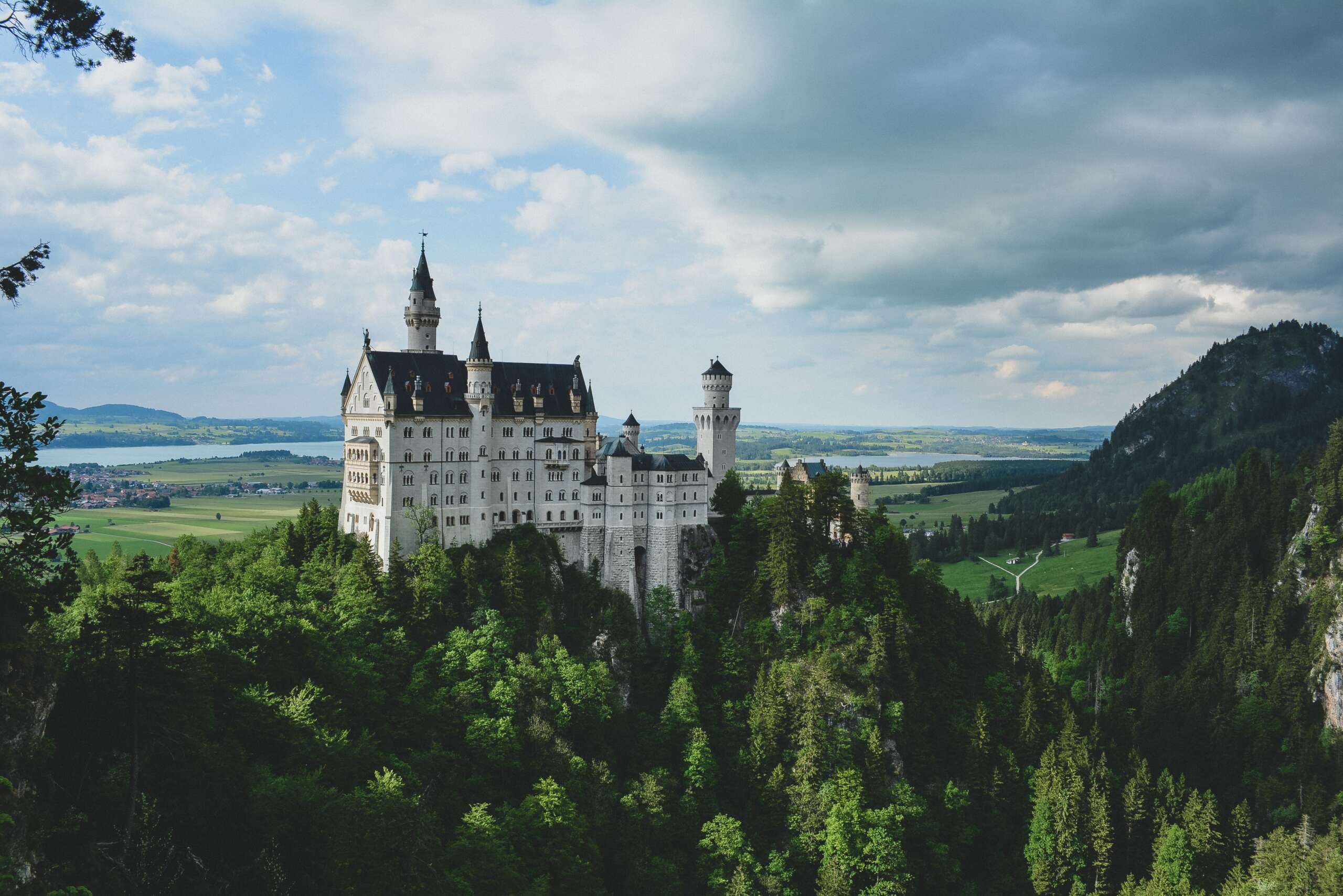
Even those without noble blood can now dine and sleep in dwellings that were once the exclusive preserve of Knights, Princes and Kings. From a youth hostel to a luxury hotel, visitors can choose from a wide range of accommodation in German castles and palaces.
Secret passageway to castle kitchens
Together with the surrounding Wörlitz Park, Wörlitz Castle in Saxony-Anhalt is a UNESCO World Heritage Site and regarded as the founding construction of German Classicism. Guided tours give visitors an opportunity to admire the very well preserved interior, including furniture and ceramics as well as progressive features such as dumb waiters and concealed doors. The final part of the tour takes visitors through an underground passageway to the former kitchen building of the castle. Previously a guesthouse, the castle kitchens and a washhouse, this building is now a historical restaurant. One particular highlight in the lounge is the striking floor-to-ceiling 240-year-old fireplace installation.
Visitors can also dine in regal style in Anholt Castle – one of the largest moated castles in the Münsterland region. The huge 12th-century tower bears witness to the building’s former defensive role before its conversion to a prestigious residential castle. In the “Wasserpavillon” restaurant in the middle of the palace pond, diners can enjoy gourmet cuisine accompanied by a view of the castle and park. As well as this fine dining experience, there is also a chance to visit the rustic castle cellar, which allows direct access to the castle terrace in summer.
Holiday home in a fairytale castle
A magnificent historical building reflected in the water: This is holidaymakers’ first impression of Glücksburg Castle. The moated castle, at times a residence of the Danish royal family, is one of the most important Renaissance castles in northern Europe and one of the most famous sights in Schleswig-Holstein. Holidaymakers can stay in apartments directly on the castle island in the former carriage house, surrounded by the lake, park and castle courtyard.
Several castle hotels in the Saarland area also offer visitors a chance to get away from it all in a fairytale setting, including Berg Castle, now a five-star hotel nestled in a picturesque landscape of rolling vineyards. Situated at the heart of the Saar-Hunsrück Nature Park, the Baroque-style Münchweiler Castle has been owned by the same family for eight generations. It is now a hotel and café. The beautiful Ziegelberg Castle near Mettlach offers visitors regal holiday accommodation at the heart of an ancient wooded park.



